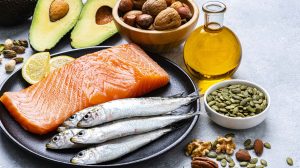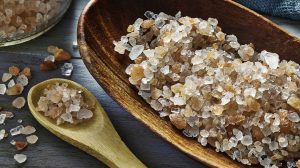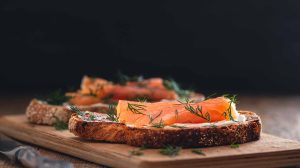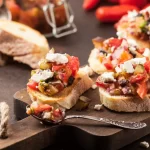The Basics: Primal vs. Subprimal and Food Service Cuts
Here’s the rub: When butchers receive a whole cow, they first break it down into eight to 10 large sections called primal cuts. Names such as chuck, rib, loin, and rump all fall into this category. From there, primal cuts are broken down into subprimal cuts, or smaller pieces from each primal cut. But what you find in a butcher shop or your grocer’s meat aisle are much smaller, more specific cuts called food service cuts. These cuts are fabricated into skillet-ready (or grill- or oven-ready) steaks (think T-bone), roasts (such as standing rib roast), and other retail offerings (such as short ribs and ground chuck) that you’ll often see in recipes. To put it into perspective, a 1,000-pound steer yields about 465 pounds of retail cuts. Of those, only 75 pounds are what we would call steaks (such as a T-bone, sirloin, or porterhouse).
But how do you know which cut of meat works well in what recipe? As a general rule, certain cuts of steak are best grilled, while others are tastier roasted, and still others are best pan-fried. Thrifty cuts, from the ends and underside of a steer, do better braised at low heat.
Here’s a shallow dive into the primal cuts—and which retail cuts come from each, with hints for what parts of the animal fare best with specific cooking methods for the most flavorful, tender result.
The 9 Primal Cuts
Depending on which institution’s definition you go by, there are eight, nine, or 10 primal cuts. Here, we’ve outlined nine, using the most common categorizations.
The cuts you are likely to find in the supermarket can be divided into premium and thrifty cuts. The first four cuts listed (rib, loin, sirloin, and round) are all considered “premier” cuts and are usually suitable for broiling and roasting. The other five are known as “thrifty” cuts (chuck, brisket, shank, plate, flank); these cuts often require longer cooking methods but deliver tasty results.
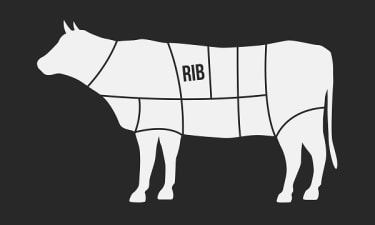
1. Rib
Prime and juicy, this section sandwiched between the shoulder (or chuck) and the loin is where the cow does the least work, resulting in fatty, marbled, and tender meat. From this cut, butchers make rolled roasts and standing rib roasts, as well as racks of ribs for grilling or roasting. The lower portion of the rib can be cut into short ribs, best for braising or roasting; the meat becomes fall-off-the-bone tender when cooked in broth or wine.
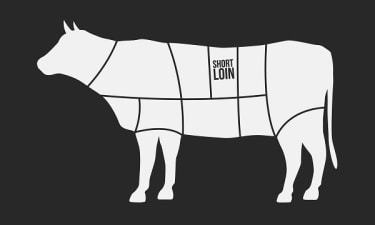
2. Loin
The loin, also called short loin, is a small section between the rib and the sirloin, past the ribs. The ratio of meat and fat to bone is high. T-bone and porterhouse are classic cuts from this region, along with filet mignon (which has no bones), the ultimate in tenderness. These cuts work well pan-seared or grilled, or roasted in high heat.
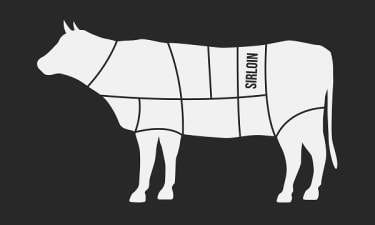
3. Sirloin
The sirloin sits in the lower back, right before the rump or the round, and is tender, semi-lean, free of bones, and a popular steak cut. From here, butchers also fabricate tri tip, a triangular cut of beef drawn from the bottom of the sirloin. Named after its triangular shape with a tapered “tip,” this cut is extra flavorful and juicy and does well on the grill.
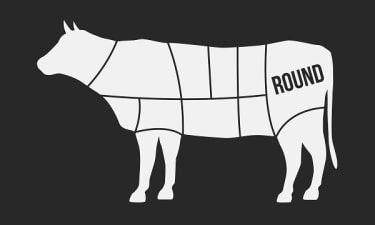
4. Round
The rear end of the cow—sometimes broken into rump and round—these hardworking hindquarters can be tough. Both a rump roast (from the rump) and round cut are best for braising. Watching your weight? Choose beef round as it contains very little fat. And due to the absence of fat, beef round has a very smooth and even texture, which makes it ideal for all kinds of recipes.
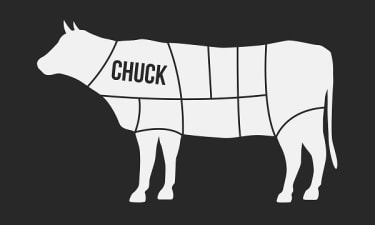
5. Chuck
Cut from the shoulder of the cow, right behind the neck and abutting the rib and brisket, the chuck is a tough, muscular meat that’s usually best for braising and long cooking methods. Generally, you’ll see this listed as a chuck roast, for braising (as in a classic pot roast), or cut into cubes for stew meat. Cooking chuck in a slow cooker or multicooker can yield supple, delicious rewards.
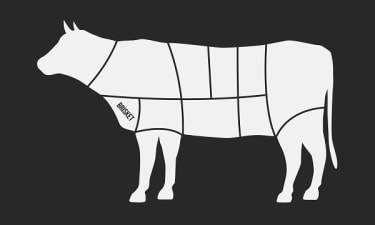
6. Brisket
The brisket, or breast of the animal, falls between the two front legs or foreshanks. Tender when cooked low and slow, and often highly fatty and marbled, brisket is ideal for simmering until tender and ready to fall off the bone (with plenty of rendered fat in the broth!). It is also used for ground beef, along with the shank. Brisket is commonly called for in pot roast recipes and barbecue brisket, and is used to make corned beef.
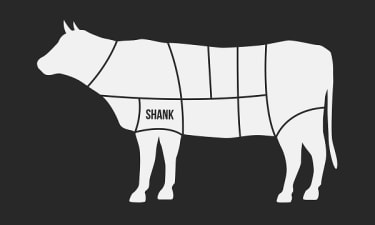
7. Shank
The shank, also called foreshank, is essentially the forearm of cattle. Often, this meat is ground for burgers, meatballs, and taco meat. The hind shank (i.e., the cow’s thigh) is usually cut into stew meat, for braising or simmering.
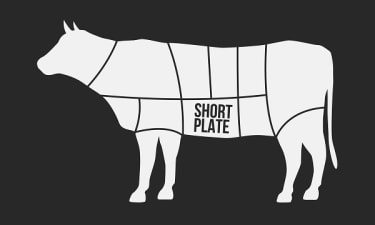
8. Plate
The plate is the belly of the cow—sometimes called the short plate, just below the ribs, and between the brisket and the flank. It’s from here that butchers cut the hanger steak, as well as skirt steak—a thin, long cut that is prized for flavor. Tenderness is not a hallmark of meat cut from this region, but marinades work like a charm here.
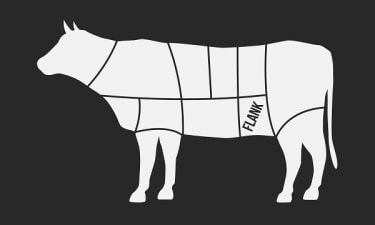
9. Flank
Think of the flank as the lower belly of the cow. This cut is often grilled, seared, stuffed, and rolled or even braised. This economic, highly versatile cut was once called the butcher’s cut because it was the one that butchers historically favored for their own families. Both lean and flat, flank steak is fairly flavorful, and it responds well to marinades (for tenderization) and quick, high-heat grilling.



